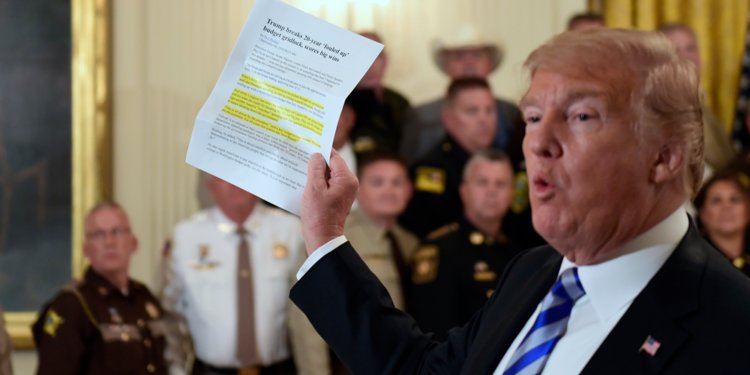But just like how money can't buy you happiness, it also can't buy you PM fit.
Saturday thoughts on funding: Where it helps. Where it doesn't. And how it affects team, success, and PM fit.
This is just my $0.02 after looking reviewing 30k+ early stage startups personally and having led 350+ investments across 2 VC firms & as an angel.
Let's begin! >>
But just like how money can't buy you happiness, it also can't buy you PM fit.
But for software startups, it's unclear if ppl want your product at your price pt.
But having sales does not mean that you have a repeatable customer acquisition process that can be sustainable
Frankly speaking, finding PM fit is a LOT of luck. This explains why a lot of serial entrepreneurs who were successful on 1 venture have a hard time repeating that.
It's not a lack of capabilities.
This is why SV VCs will often back "failed founders" again, because that failure isn't (always) an indicator of the founder -- there's also that big LUCK component of finding (or not finding) PM fit.
I mentioned 1 way -- experience in seeing and doing a lot. (and learning)
Another way: focusing on only things that matter (mostly derisking sales) & ignoring all else to utilize time and resources efficiently and quickly
But doing just 1 talk feels like nothing but it adds up.
Now where does money come into this?
And that affects runway. Runway affects # of PM fit experiments.
Then, by extension of their runway, they find strong PM fit and the rest is history.
However, I'm very aware that MOST founders don't get 2nd or 3rd chances like this.
Should ppl get more shots on goal? That's a philosophical q above my paygrade. But the way we operate @HustleFundVC is that we just assume that each of our cos will only get 1 shot on goal.
3 addl rounds -> your ROI is cut in half & that may not even return the fund even if the co "wins".
The flip side is if you don't have PM fit, having more ppl on the team makes getting to PM fit HARDER not easier in many cases.
More from Elizabeth Yin
More from Startups
I have been doing individual posts on numbers every week so wanted to one big thread with all updates 👇🏽
Week
Transparency time:
— Sharath \U0001f4e3 (@5harath) February 12, 2021
It's been 24hrs @shoutoutso_ went to public launch \U0001f525
Some numbers:
\U0001f4b0 6 rockstars bought Pro, Pro Annual plans.
\U0001f4aa\U0001f3fd 168 signups.
\u2665\ufe0f 182 Shoutout walls created.
\U0001f465 160K Twitter impressions on launch thread.
Thank you for making it a huge day for us \U0001f64f\U0001f3fd pic.twitter.com/is9Z53trIh
Week
Transparency time: It's been 2 weeks since @shoutoutso_ launched to the public \U0001f525
— Sharath \U0001f4e3 (@5harath) February 25, 2021
Here are some highlights:
\U0001f451 18 rockstars paid customers
\U0001f4b0 $240 MRR
\U0001f4aa 426 signups and counting
\u2764\ufe0f 140 walls published
\U0001f3c6 #3 product @ProductHunt
Appreciate this community so much\U0001f64f\U0001f3fd pic.twitter.com/KmKCZdHqlJ
Week
Transparency time: Week 3 @shoutoutso_ \U0001f525
— Sharath \U0001f4e3 (@5harath) March 4, 2021
Here are some highlights:
\U0001f451 29 rockstar paid customers
\U0001f4b0 $460 MRR
\U0001f4aa 475 signups and counting
\u2764\ufe0f 163 walls published
\U0001f3c6 Launched on @ProductHunt(#3) @IndieHackers
Grateful for this amazing community for all the love and support \U0001f64f\U0001f3fd pic.twitter.com/MVGo0cfZJj
Week
Transparency time: It's been a month we launched @shoutoutso_ \U0001f525
— Sharath \U0001f4e3 (@5harath) March 11, 2021
Here are some highlights:
\U0001f451 36 rockstar paid customers
\U0001f4b0 $610 MRR
\U0001f4aa 516 signups and counting
\u2764\ufe0f 191 walls published
\U0001f3c6 @ProductHunt Maker Grant Award
Grateful for this amazing community for all the love \U0001f64f\U0001f3fd pic.twitter.com/1i7LxLU4Ap
Daily Rush was the culmination of years of using the web to do gaming journalism. I started Konsollen all the way back in 1995, then ran https://t.co/zsT3ykQcVk for years in anticipation of Id's shooter, then worked at a web portal, then Daily Rush.
This was how I got into web development, project management, organizing, writing, publishing, and how I met lifelong friends. What a wonderful time. But most good things come to an end. We should all be so lucky to see something we help set in the sea brave the waves for 20 yrs!
It's awesome to see the Internet Archive snapshots from all the way back to the early months of the site. Web design anno 2000 😍
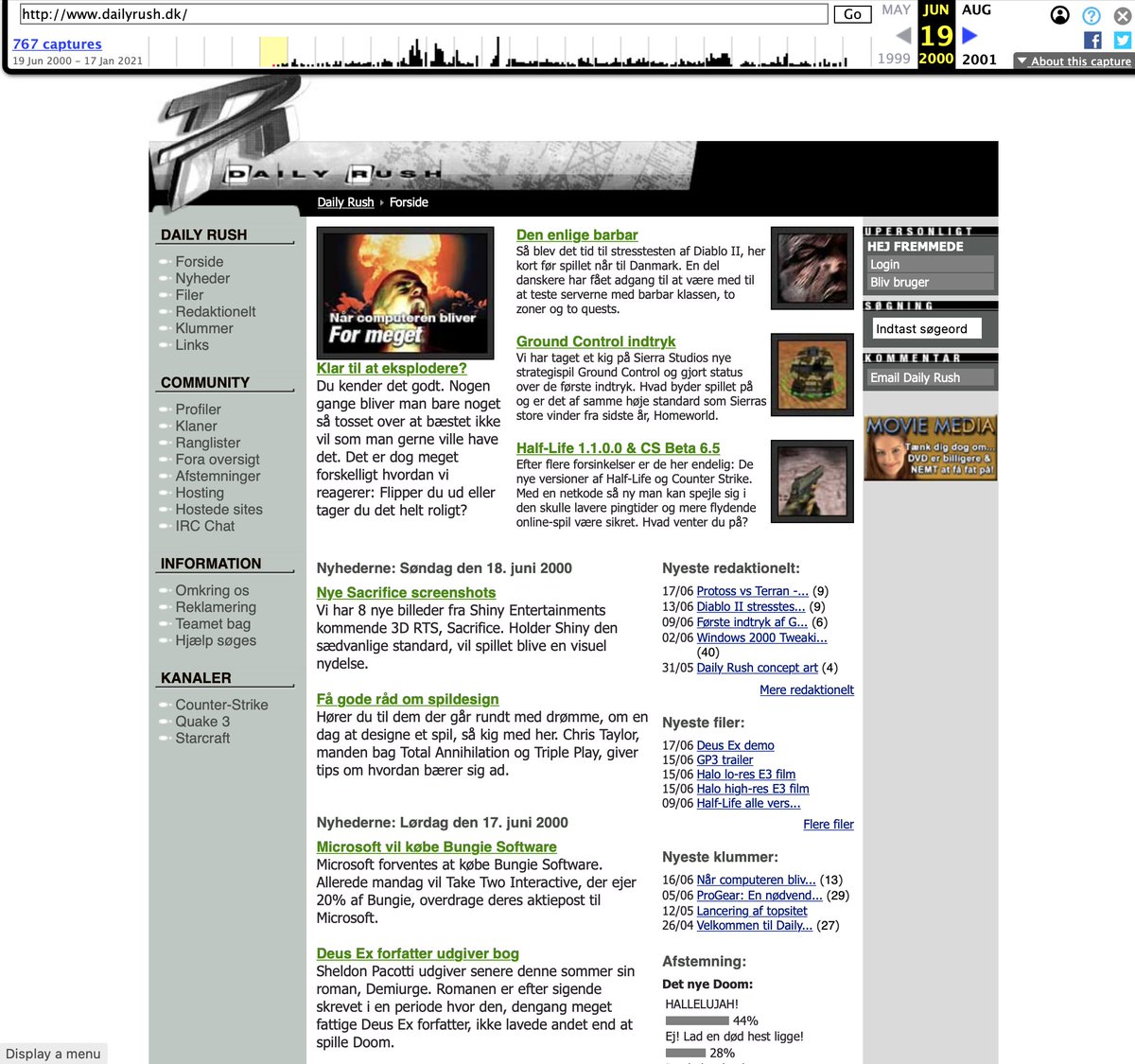
The memory lane trip on the Internet Archive goes all the way back to the precursor to Daily Rush, that https://t.co/zsT3ykQcVk site. Here's a snapshot from 1999! Complete with all the news written by yours truly 😄
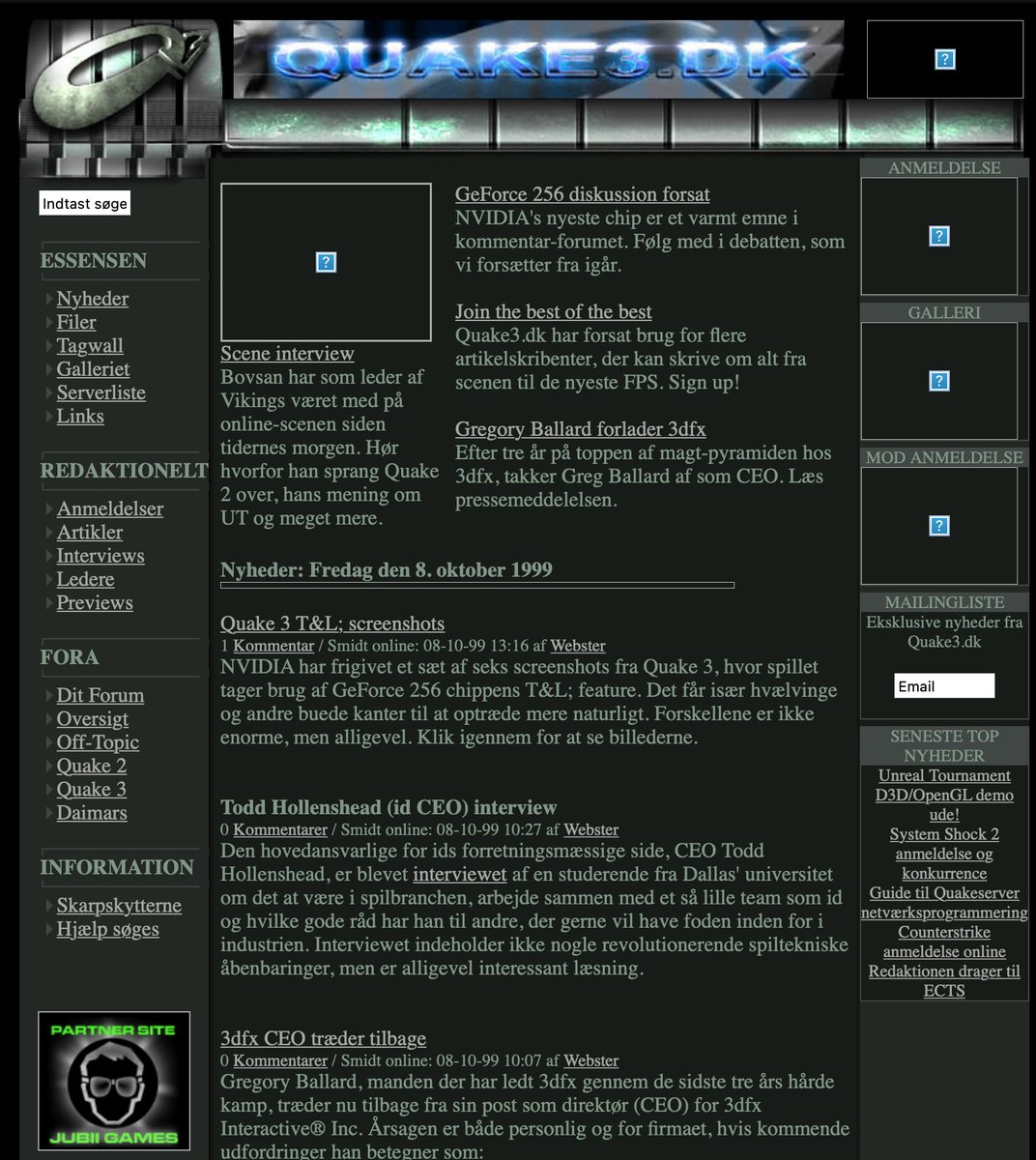
He also open-sourced his entire curriculum, templates and all. Here's a link 👇
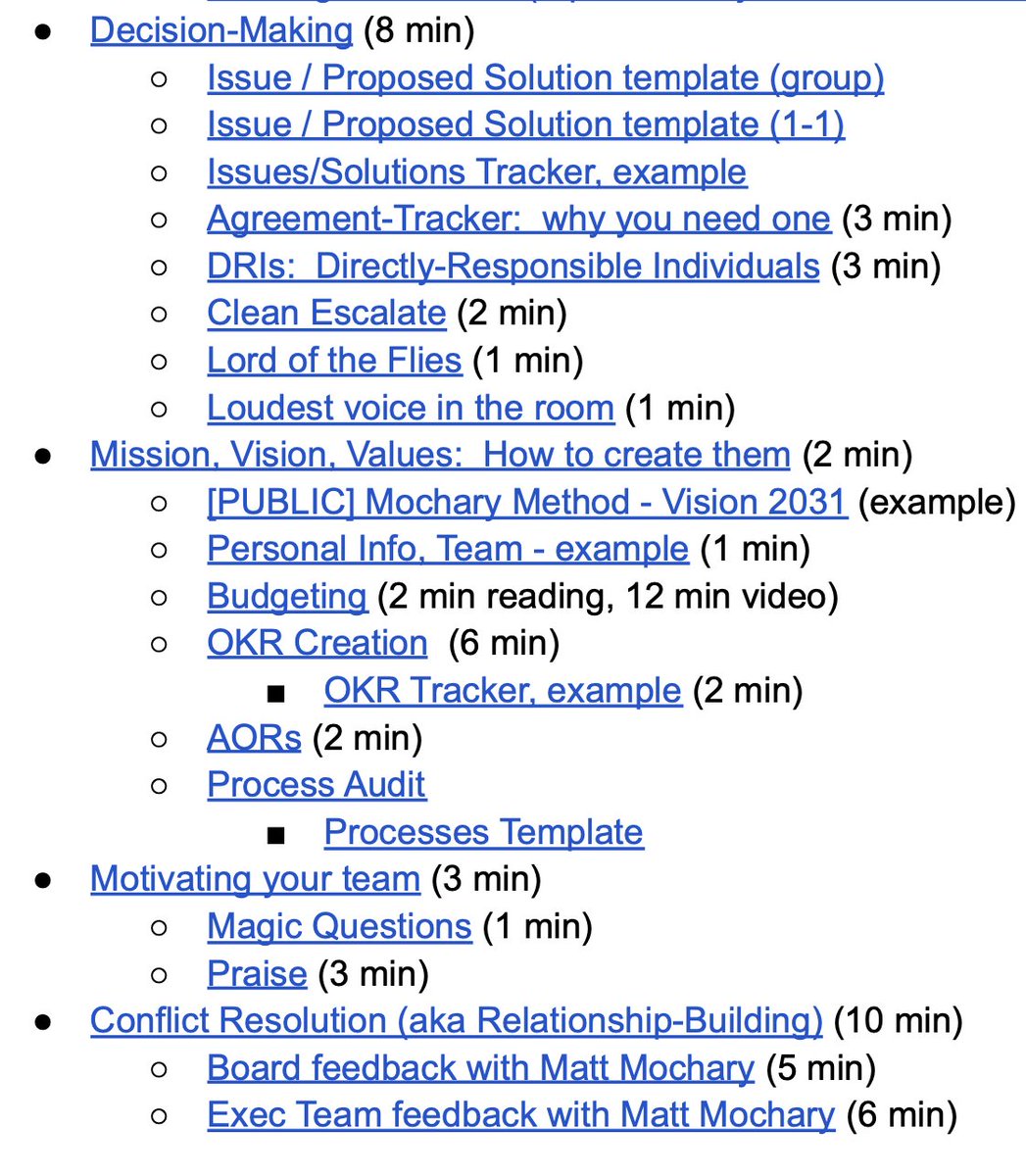
The Mochary Method Curriculum ➔ https://t.co/A8J51IzYhz
My recent conversation with @mattmochary where we talk about fear, anger, innovation, how to lay people off well, and his coaching practice ➔
Also in podcast form ➔
For more from Matt, buy this book
You May Also Like
View the resolutions and voting results here:
The resolution titled "The occupied Syrian Golan," which condemns Israel for "repressive measures" against Syrian citizens in the Golan Heights, was adopted by a vote of 151 - 2 - 14.
Israel and the U.S. voted 'No' https://t.co/HoO7oz0dwr
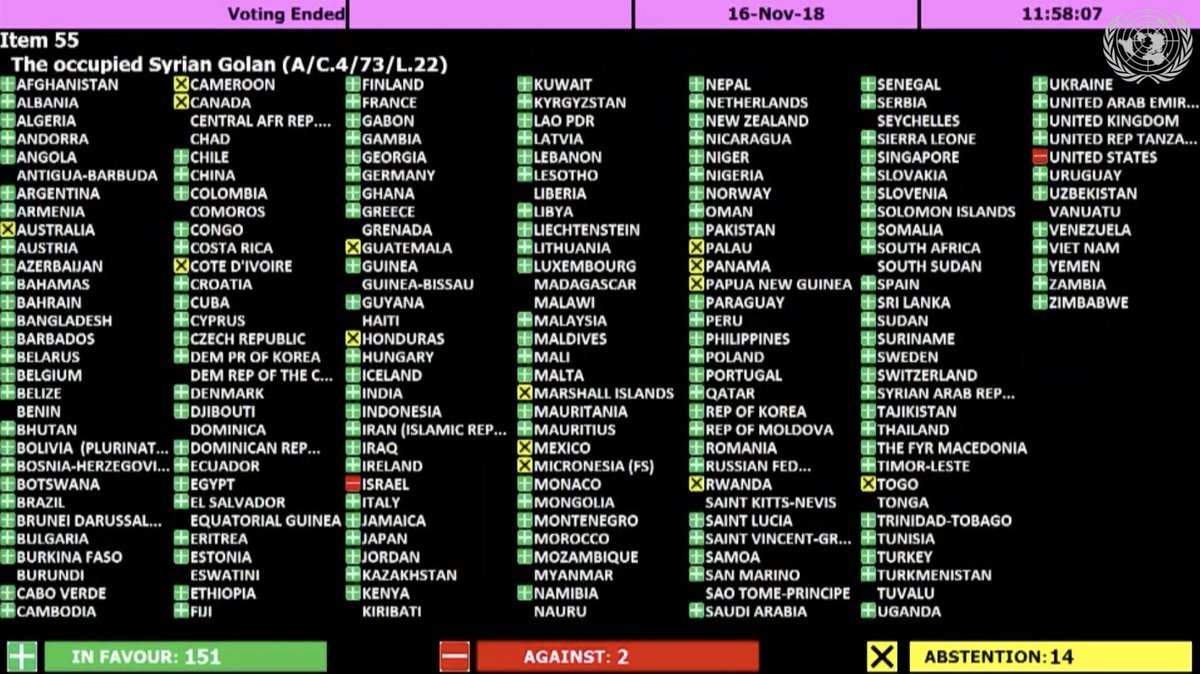
The resolution titled "Israeli practices affecting the human rights of the Palestinian people..." was adopted by a vote of 153 - 6 - 9.
Australia, Canada, Israel, Marshall Islands, Micronesia, and the U.S. voted 'No' https://t.co/1Ntpi7Vqab
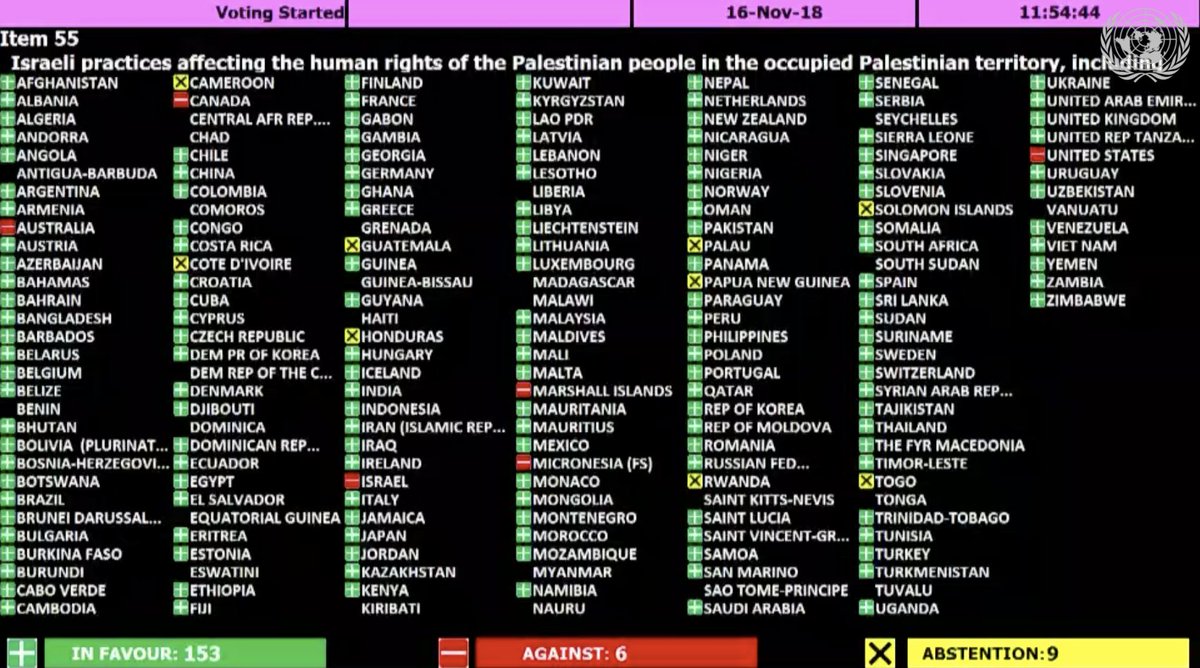
The resolution titled "Israeli settlements in the Occupied Palestinian Territory, including East Jerusalem, and the occupied Syrian Golan" was adopted by a vote of 153 – 5 – 10.
Canada, Israel, Marshall Islands, Micronesia, and the U.S. voted 'No'
https://t.co/REumYgyRuF
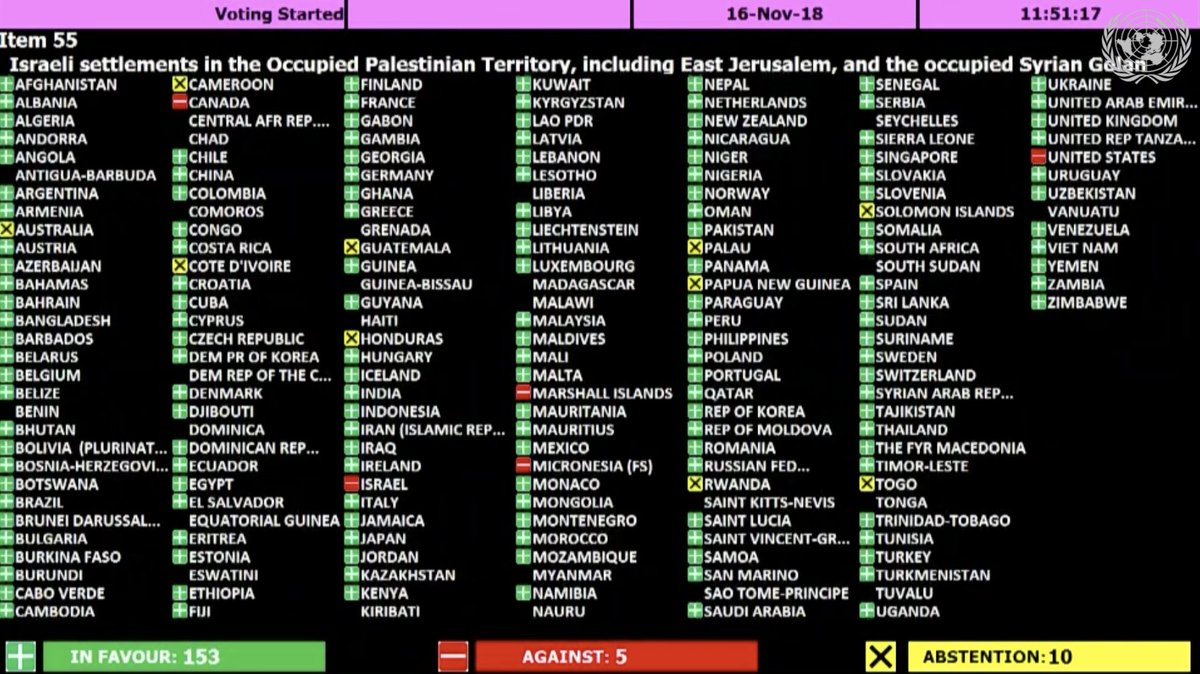
The resolution titled "Applicability of the Geneva Convention... to the
Occupied Palestinian Territory..." was adopted by a vote of 154 - 5 - 8.
Canada, Israel, Marshall Islands, Micronesia, and the U.S. voted 'No'
https://t.co/xDAeS9K1kW

Here I will share what I believe are essentials for anybody who is interested in stock markets and the resources to learn them, its from my experience and by no means exhaustive..
First the very basic : The Dow theory, Everybody must have basic understanding of it and must learn to observe High Highs, Higher Lows, Lower Highs and Lowers lows on charts and their
Even those who are more inclined towards fundamental side can also benefit from Dow theory, as it can hint start & end of Bull/Bear runs thereby indication entry and exits.
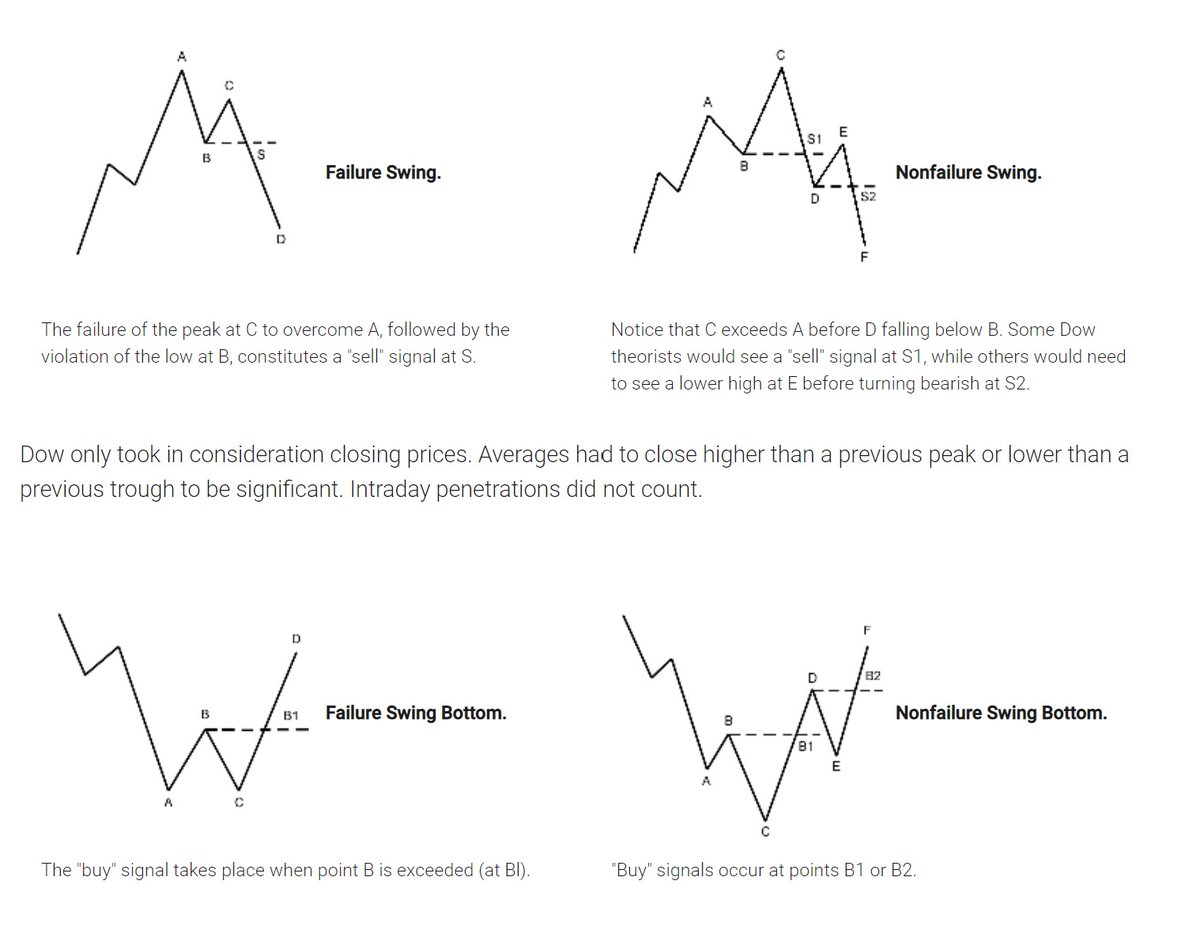
Next basic is Wyckoff's Theory. It tells how accumulation and distribution happens with regularity and how the market actually
Dow theory is old but
Old is Gold....
— Professor (@DillikiBiili) January 23, 2020
this Bharti Airtel chart is a true copy of the Wyckoff Pattern propounded in 1931....... pic.twitter.com/tQ1PNebq7d












